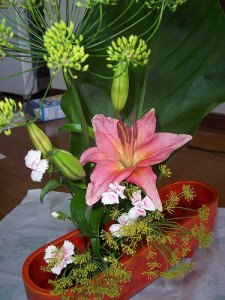Japan culture why visit Japan
Japan Culture is probably the number one reason for outsiders to visit the country.
While it is true that Japan Culture is unique there are, in fact, rather beautiful sights to behold in that country (the cherry blossoms, Mount Fuji and even the splendid old-world architecture found in Kyoto), it is the mysteries of the culture of Japan that holds much of the attraction.
Shinto temples, traditions of Japanese banishing magic, Zen philosophy and the like have left their mark on the landscape of the country, and rural Japan is where they are best preserved.
 The Maiko and Geisha traditions are best witnessed here, and certain social traditions, like the Japanese tea ceremony, are also best experienced in rural Japan. Indeed, Japan culture is complex, but each complexity seems to have an underlying simplicity driving it – and vice versa. This is why Japan has always been fascinating to outsiders.
The Maiko and Geisha traditions are best witnessed here, and certain social traditions, like the Japanese tea ceremony, are also best experienced in rural Japan. Indeed, Japan culture is complex, but each complexity seems to have an underlying simplicity driving it – and vice versa. This is why Japan has always been fascinating to outsiders.
Much of Japan culture involves unifying concepts to form an attractive and balanced whole – this can be seen in their approaches to flower arrangement, their clothing, their gardens, their paper folding and the like.
J apan culture is one that is also strongly built on the concept of structure, from hierarchy to stability. Traditional Japan culture is a true backbone of identity that defines what the country has achieved for itself so far.
apan culture is one that is also strongly built on the concept of structure, from hierarchy to stability. Traditional Japan culture is a true backbone of identity that defines what the country has achieved for itself so far.
In this section of the site, we will be enumerating and discussing all of the most fascinating aspects of Japan culture – even those observable in rural Japan. From traditional greetings to the art of calligraphy, you will learn some of the most interesting aspects of Japan culture.
Ikebana Lives On in Japan Today
One famous form of art in Japan today that can be traced to as early as the sixth century is the Ikebana. This artistic expression consists of a special flower arrangement that is interestingly symbolic of various things now and is already known and practiced around the world. Indeed it is a fascinating and creative way of decorating a room and providing a fresh and natural appeal together with a sense of serenity.
A Little Background
How did Ikebana begin? Actually, it was not intentionally intended for creative expression or for decorative purposes. At the start, it was not actually a form of art but a religious devotion in which Buddhist monks came up with the fusion of different flowers and branches to interpret figurative movements and signs of faith.
As Ikebana rose in popularity and spread throughout Japan, its original intention was lost and became unknown. Instead, it turned out to be known for representing the natural cycles or seasons.
Later on, as many schools of this splendid art emerged and proliferated, a lot of people began to make use of it also for ornamental reasons and self-expression.
Schools of Ikebana
These days, you will come across various schools of Ikebana, each one with a particular style and purpose.
The oldest one is called Ikenobo School, capitalizing on elegant forms that can still be closely linked to this art’s original religious purposes.
This school makes use of the Rikka style, referring to “standing flowers” designs.
The Ohara School, on the other hand, utilizes the Moribana style.
This is very different from Rikka because it means “piled up” and uses low, wide, and flat trays or containers. Flowers and branches are arranged horizontally rather than vertically.
As time went by, modern times called for free personal expression through Ikebana.
This is what the Sogetsu is all about, thereby encouraging greater creativity and imagination. Furthermore, since it is quite unconventional, this is the kind of Ikebana that embraces a multitude of materials such as driftwood and even metal.
Using flowers is actually optional.
In Japan today, these schools of the Ikebana art are still very popular and widely practiced.
They are known in other countries too and are implemented for decorating homes and commercial spaces.
There are some foreigners who have also taken a liking to this art form and has made it a regular hobby and artistic means of expression.

